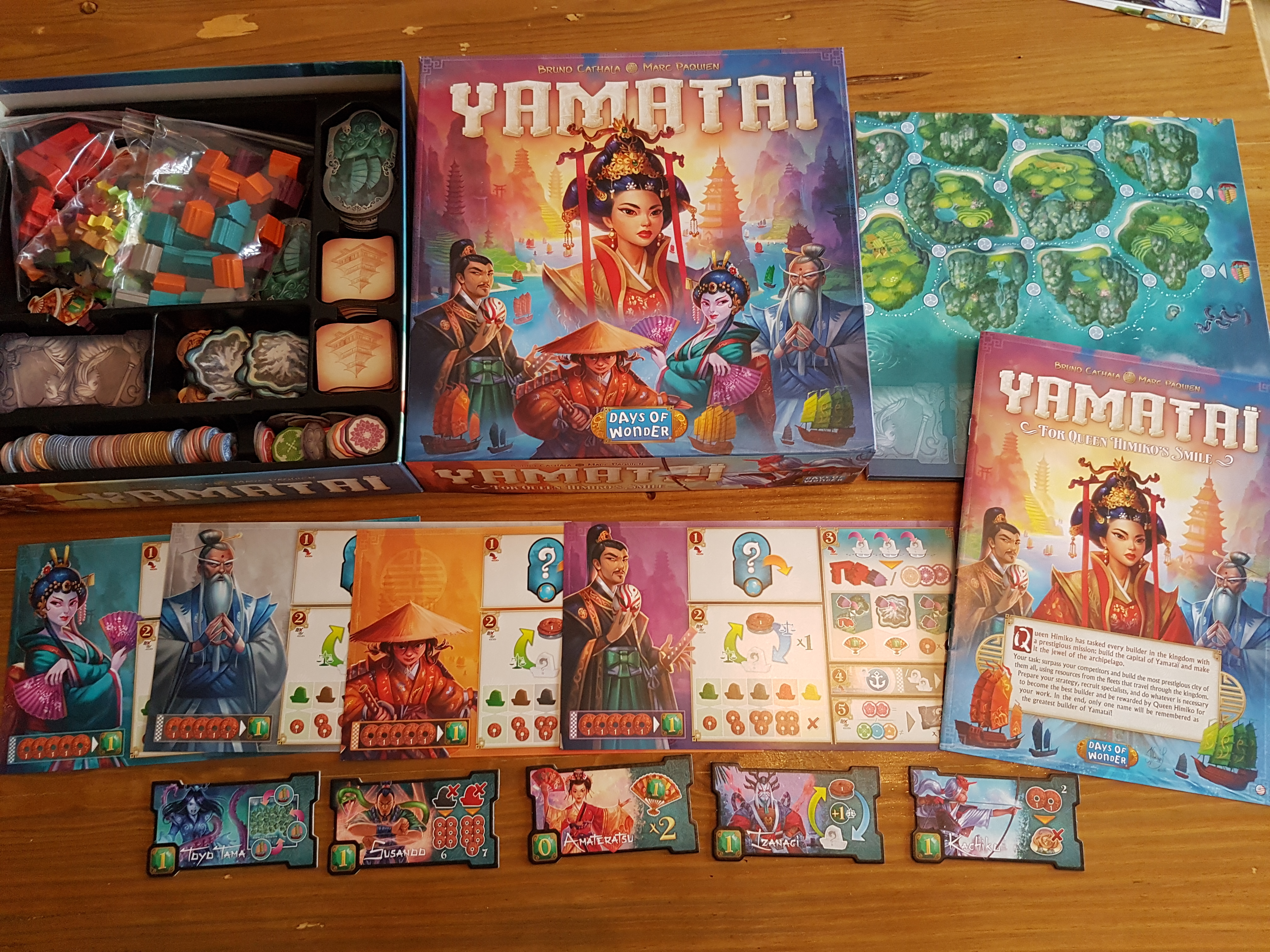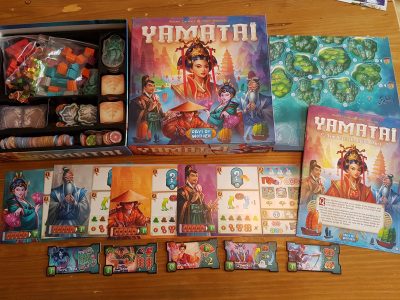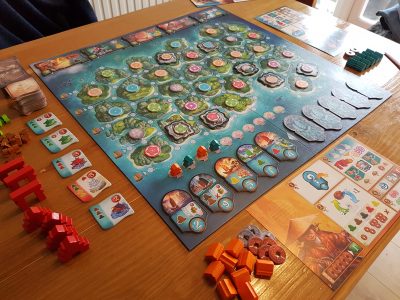Yamatai is an extremely vibrate board game from Days of Wonder, built for 2 – 4 players. The suggested time for a game is 40 – 80 minutes, however I feel even a game with only 2 players will go to about the 60-minute mark. The concept of the game is to used placed boats as resources to construct buildings. In turn this scores a varying number of prestige points, Yamatai’s term for victory points.
The game is simple to set up, despite there being several bits to shuffle, sort and place on the board. Players separate the boats into colours, coins into denomination piles and then start shuffling the Specialist, Fleet, Building and Culture tokens. Five Fleet, five Specialist and five building tokens are placed face up, with the rest remaining face down in their designated places. A Culture token is randomly place on each island, then flipped to reveal which need a mountain tile. Finally, standard buildings are distributed to players depending on their colour and a selection of coins is given to each player. It sounds like a lot is going on here but everything is separate and distinctive through colours and shapes so it’s no hassle at all.
On a given go players have the potential to do five things in a particular order. First, they take a Fleet tile, this grants them a type of boat (or boats) and an ability. Secondly, players have the option to either buy or sell a single boat for coins. Thirdly, if they have placed a boat they can either take a Culture Token from, or if possible build a building on, an island adjacent to the placed boat. Next players can save one boat for the next turn, discarding any remaining which will lose them points. Finally, players may spend a set of 2 identical or three unique Culture tokens to purchase a Specialist. It’s a logical order that is quick to pick up when playing.
The wonderful plethora of colours seen in the artwork of the box continue throughout its entire contents. It is as if a modern, Japanese themed, almost stained glass window of colour adorns your gaming table. Many games shy away from bright colours but Yamatai uses them to instantly draw players in. It peeks interest from players around the table before they even know what the game is about. This isn’t to say the game uses its colour as a gimmick to be noticed. It suits the theme and is pleasing on the eye no matter how many times you’ve played.
Yamatai offers a very euro style non-conflict board game. The aggressiveness of other competitive games is almost non-existent. To the extent that the idea of screwing another player over is far from beneficial in this game. You could take a fleet token that you know would benefit someone else but chances are that decision will only hinder you. Yamatai is really about building upon what you have separately from other players. There are competitive elements of getting a Specialist first or building somewhere to score big but the rest is about what can you do to advance your cause.
If there was an element of this game that sings out in glory it has to be the mechanics of placing boats on the board and building a house, Torii or palace. Other than making the game board look awesome there certainly has been thought behind the placement mechanics. When placing boats you have to initially match the colour of a previously placed boat, unless choosing an entry spot. This results in the five colours of the boats being patterned across the board, at least until abilities move them.
When it comes to building, I like the way players can build on any free island if the Culture Token has been removed, no Sacred Ground token has been placed there and the relevant boats touch the island in any way. It’s a different concept, allowing players to effectively build something using the boats their opponents have placed but it works and adds strategy to the game. It makes you question if something will help an opponent before it has the chance to help you.
NEXT PAGE



